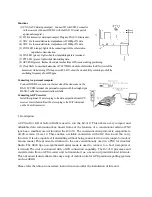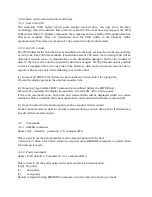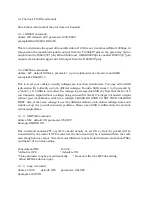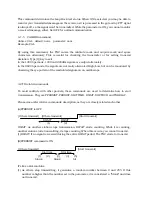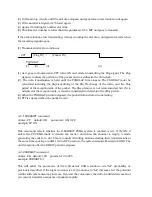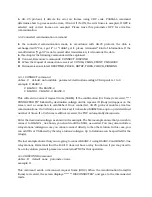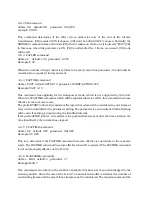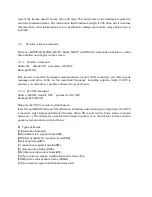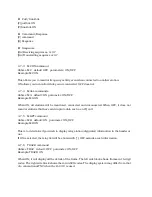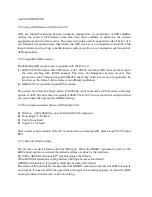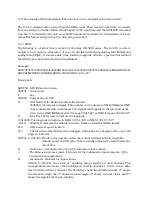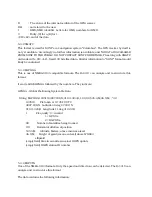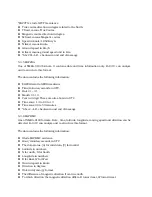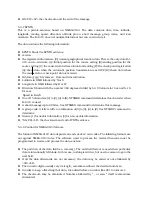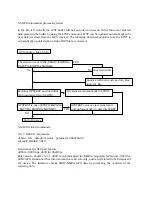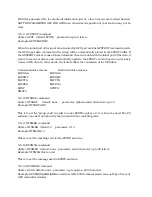
4-2-3 SLOTTIME command
abbrev. SL default:3 parameter: 0 to 255
example: SL 5
This sets the time to generate a new random code for the P-Persistent CSMA system as
previously described. It is set in 10 microsecond units.
4-2-4 DWAIT command
abbrev. DW default: 30 parameter: 0 to 255
example: DWAIT 10
Sets the time delay between the end of others’ transmission and your initiating a transmission. It
is recommended that this be set slightly different at each station in order to avoid conflicts.
SOFTCD
Abbrev. Not available default: OFF parameter ON/OFF
Example: SOFTDCD ON
This selects the method of carrier detection. If this is ON, it detects a carrier using internal
software
.
If the incoming signal is digital data, it is considered “the channel is in use”. If it is OFF,
it detects signals using the status of SQUELCH (SQ) terminal (the 3
rd
pin) on the CPU. If SQ is in
LOW position it is considered “the channel is in use”.
In 9600 bps mode, the EJ-41U always considers “the SOFTDCD command channel is in use”. If
this is the case, change this parameter to ON position. When ON, the transceiver can be run with
an “open” or no squelch setting.
4-2-5
TXDELAY command
Abbrev. TX default 50 parameter: 0 to 255
Example: TX 80
This is to determine the waiting time between PTT on and the transmission of the packet, in
units of 10 microseconds. During the TXDELAY period, the Flag signal is transmitted. This Flag
signal is used to divide frames and to allow the radio to synthesize. Please calculate enough time
for the Flag signal based on the physical TX/RX change on the transceiver, and synthesizing
timing. If the “sleep” or “battery save” mode is used at the receiving end, you must calculate it
also, or do not use sleep mode. When using digital modes, it is recommended that “sleep” or
“battery save” modes be deactivated.
4-3 Reception related commands
4-3-1 PASSALL command
abbrev. PASSA default: OFF parameter: ON/OFF
example: PASSALL ON


